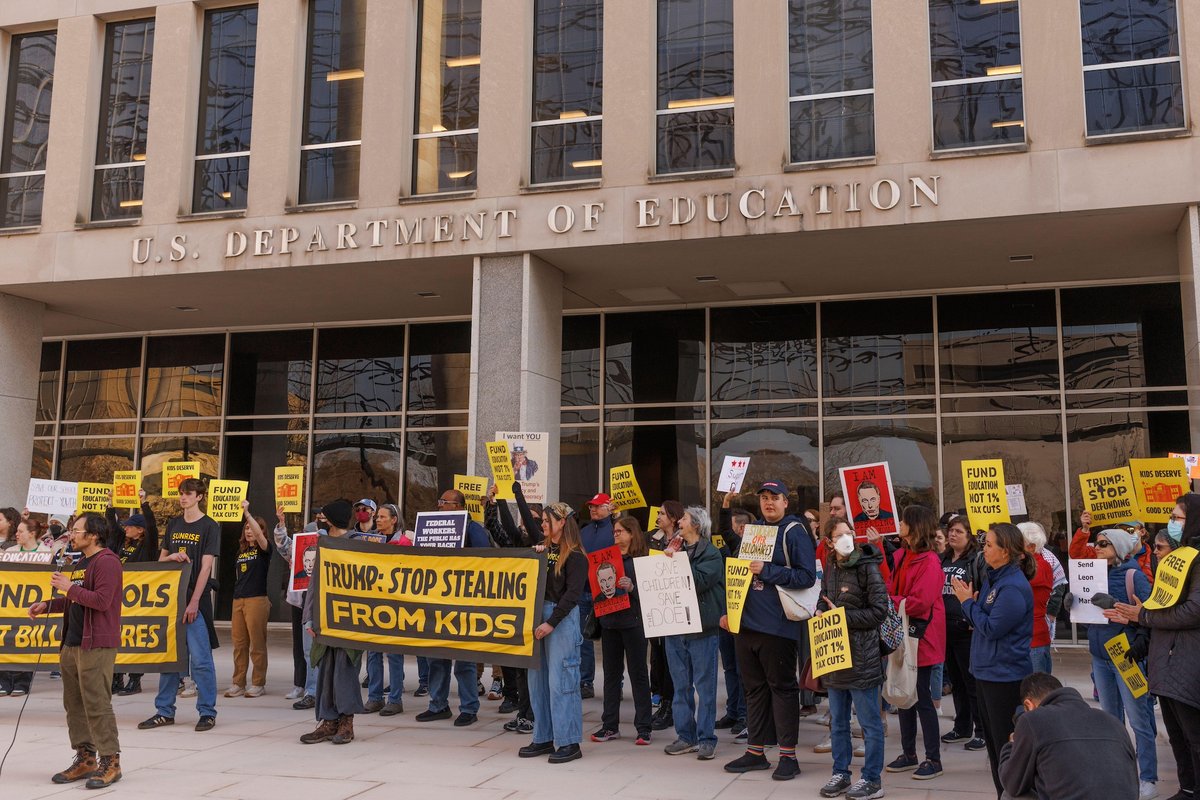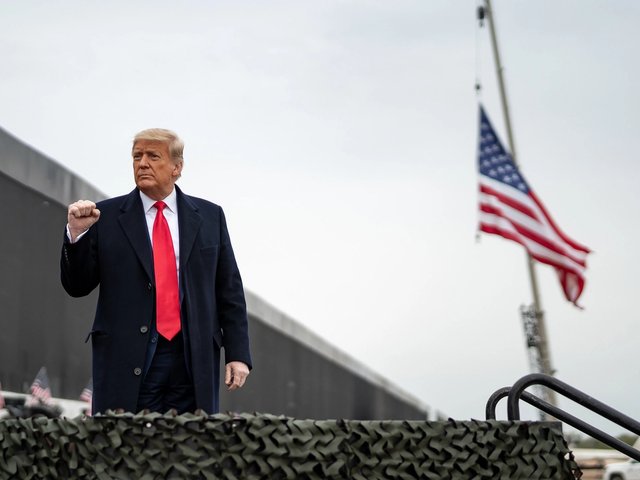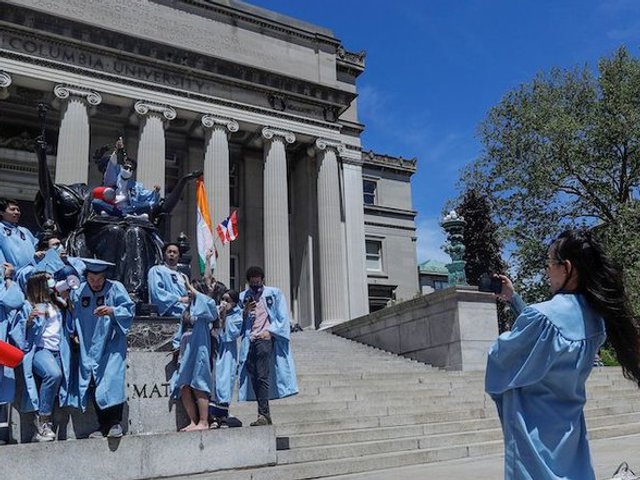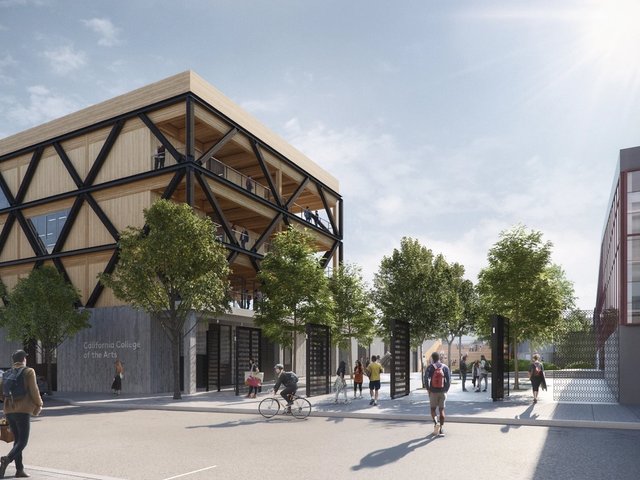Universities in the US are facing a barrage of attacks from President Donald Trump’s administration, some of which could deal a death blow to smaller arts colleges and programmes around the country. Faculty members are rushing to prepare for major disruptions to the flow of student aid and research funding, a drastically weakened Department of Education (DOE) and Institute of Museum and Library Services—agencies that are integral to their operations—and the possibility of rising taxes on their endowments, all while navigating a political climate that is increasingly hostile to free speech.
The greatest threat faced by arts colleges and programmes, according to Deborah Obalil, the president and executive director of the Association of Independent Colleges of Art & Design (AICAD), is the turmoil to student aid expected to come down the pipeline in the coming months and years.
“The vast majority of art and design institutions are tuition-dependent institutions,” Obalil says. “The reality is that within higher education it’s a very small number of private institutions that have the private resources to be able to sustain a significant disruption in federal student aid.”
The Trump administration has effectively cut the DOE’s workforce in half, eliminating a significant number of staffers with knowledge of the systems housing the notoriously thorny federal aid financial form (FAFSA), which just went through a chaotic rebuild and rollout. The DOE typically manages the dispersal of more than $1 trillion in student aid every year, a job that Obalil notes it “was barely staffed to manage” even before Trump’s re-election.
Further compounding the problem, Trump announced on 21 March that the management of student aid would be transferred from the Department of Education to the Small Business Administration, which Obalil notes is technically illegal. That transfer is sure to be challenged in court and bring more chaos whether or not it comes to fruition.
Colleges and universities are developing financial contingency plans even as multiple lawsuits have now been filed against the Trump administration for its decimation of the Department of Education.
End of campus free speech?
Universities and colleges in the US are also embroiled in the existential question of how, as institutions of higher learning dedicated to the freedom of expression and learning, to respond to the letter issued by the Trump administration on 4 February demanding compliance with its campaign against diversity, equity and inclusion programmes. More than 50 universities are also being investigated by the DOE for allegedly doing too little to crack down on “antisemitism” and “illegal protest” on their campuses, a move viewed by many as an outright attack on freedom of speech on campuses.
For Obalil, these actions by the Trump administration amount to the “significant attempt to curtail our First Amendment rights—our right to freedom of speech and expression, and the academic freedom of faculty”.
And yet, the impact of all of this has been a profound chill on public speech, even in departments dedicated to creative expression. Of 15 arts colleges and programmes contacted for this story, all but three declined to speak or did not respond. This silence does not necessarily represent preemptive compliance with the Trump administration, according to one arts school leader who spoke on the condition of anonymity, but the fact that universities are developing survival strategies and trying to keep up with the pace of decisions coming out of the White House. Large-scale efforts are being made to shore up data and academic work behind the scenes, and audits of financial risk are underway.
To be sure, the greatest financial risk posed to art schools is to those with smaller endowments and larger proportions of students receiving Pell Grants, intended for the students from the lowest-income backgrounds. The bill that passed through Congress on 14 March and averted a government shutdown maintained the 2024-5 funding levels for Pell Grants even as a nonpartisan body has warned of a dire deficit threatening that programme’s future. It also failed to set a maximum for individual grants, giving the Trump administration greater control over the allocation of funds.
Institutions big and small feel pressure
Universities that rely on endowments or have millions of dollars in real estate holdings may be in a different arena when it comes to their financial security, but even those institutions are not safe from slashed research budgets, as the Trump administration has demonstrated with its attacks on Columbia University. There are also GOP efforts underway to tax university endowments at a higher rate, which would impact not only ivy league universities in major cities, but smaller arts programmes and colleges in rural areas.
Such a tax could impede the ability of an entirely tuition-free institution like Berea College in Kentucky, for instance, from offering low-income students an education, Obalil says. (The celebrated Alabama potter Larry Allen studied at Berea and went on to have his ceramics featured in the blockbuster film Black Panther: Wakanda Forever.)
These attacks on higher education, Obalil adds, threaten history, heritage and First Amendment rights. “Any loss of funding for arts and culture and humanities is a loss for society,” she says.
A handful of universities are sounding a more resilient note. At Wesleyan University in Connecticut, which admittedly has a $1.6bn endowment to lean on and a president who has been a clarion voice advocating for institutions to reject the chill on free speech, an arts professor noted the inherent limits of the Trump agenda.
“There’s only so much the federal government can do” to stifle the pluralistic, inclusive study of art and history, says Katherine M. Kuenzli, chair of art and art history at Wesleyan, who is soon to publish a book (co-authored with Bryan Clark Green and Kathleen James-Chakraborty) on a building that features the tallest named memorial to an African American in the US, the Belgian Friendship Building on the campus of Virginia Union University.
“That project was funded by a European Union grant,” says Kuenzli. “Art history is international; our networks are international. People are curious, and history was made by many different people from many different countries so this process of uncovering the roles and contributions of a diverse number of people is ongoing and simply will not stop. So we continue, and weather the storm.”





